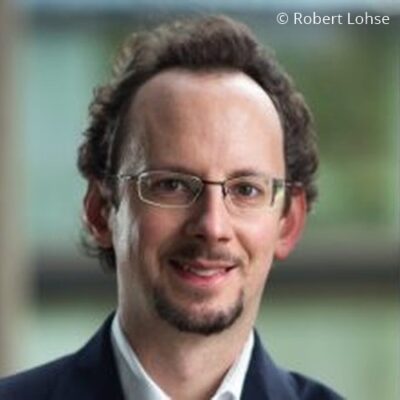Geometric Representation Learning
Title: Geometric Representation Learning
Duration: 01.06.2021-31.12.2025
Research Area: Mathematical Foundations and Statistical Learning
In this project, we aim to advance methods of geometric representation learning based on non-Euclidean geometry. Many important applications of AI involve data which is structured as graphs, networks or trees, and hence is inherently non-Euclidean.
In a first stage, we will focus on hyperbolic geometry (the geometry of negatively curved space), which has already found important applications in network embeddings, due to its `tree-like’ metric structure. We aim to advance and improve current network embedding methods, both by improving their accuracy and their numerical efficiency.
While network embeddings are a problem of unsupervised learning, we will explore applications in supervised learning in a further stage. Here, a promising avenue of research is prototype learning, where target classes are represented by prototypes, i.e., by points in a geometric target space, such as hyperbolic space. Due to its ‘branching’ structure, hyperbolic space is well suited for low-dimensional representations of learning problems with a large number of target classes. Potential applications in AI are few-shot or zero-shot learning, which involves classification of instances, which have been seen rarely or not at all during the training stage of the classifier. Furthermore, we plan to explore the potential of non-Euclidean geometry for the interactive visualization of complex data sets. From a broader perspective, our vision is to introduce geometric methods, such as non-Euclidean embeddings or the analysis of local curvature to the standard toolkit of network analysis in AI.
Aims
In thie project “Geometric Representation Learning”, we have three major aims:
- Improve accuracy and efficiency of network embedding models
- Leverage hyperbolic geometry for supervised and unsupervised learning with hierarchically structured data
- Explore the potential of non-Euclidean geometry for the visualization of complex data sets
Problem
The central idea behind the project is to combine non-Euclidean geometry, in particular hyperbolic geometry, with existing machine learning approaches. Due to its `tree-like’ and exponentially expanding structure, hyperbolic geometry is well used to represent hierarchical data, which is frequently encountered in applications.
Technology
- Non-Euclidean geometry
- Network embeddings
- Supervised and unsupervised learning
Publications
- Keller-Ressel, Martin, and Stephanie Nargang. “Strain-minimizing hyperbolic network embeddings with landmarks.” Journal of Complex Networks 11.1 (2023): cnad002.
- Stephanie Nargang „Theory and Applications of Hyperbolic Network Embeddings“. PhD thesis. TU Dresden (2023)
- Mettes, P., Atigh, M. G., Keller-Ressel, M., Gu, J., & Yeung, S. (2023). Hyperbolic Deep Learning in Computer Vision: A Survey. arXiv preprint arXiv:2305.06611. (submitted to: International Journal of Computer Vision)
- Mina Ghadimi Atigh, Stephanie Nargang, Martin Keller-Ressel, Pascal Mettes „Knowledge-Agnostic Zero-Shot Recognition“ (2024). Submitted to CVPR 2024
Team
Lead
- Prof. Dr. Martin Keller-Ressel
Team Members
- Stephanie Nargang (until 02/2023)
- Florian Köhler (since 02/2023)



